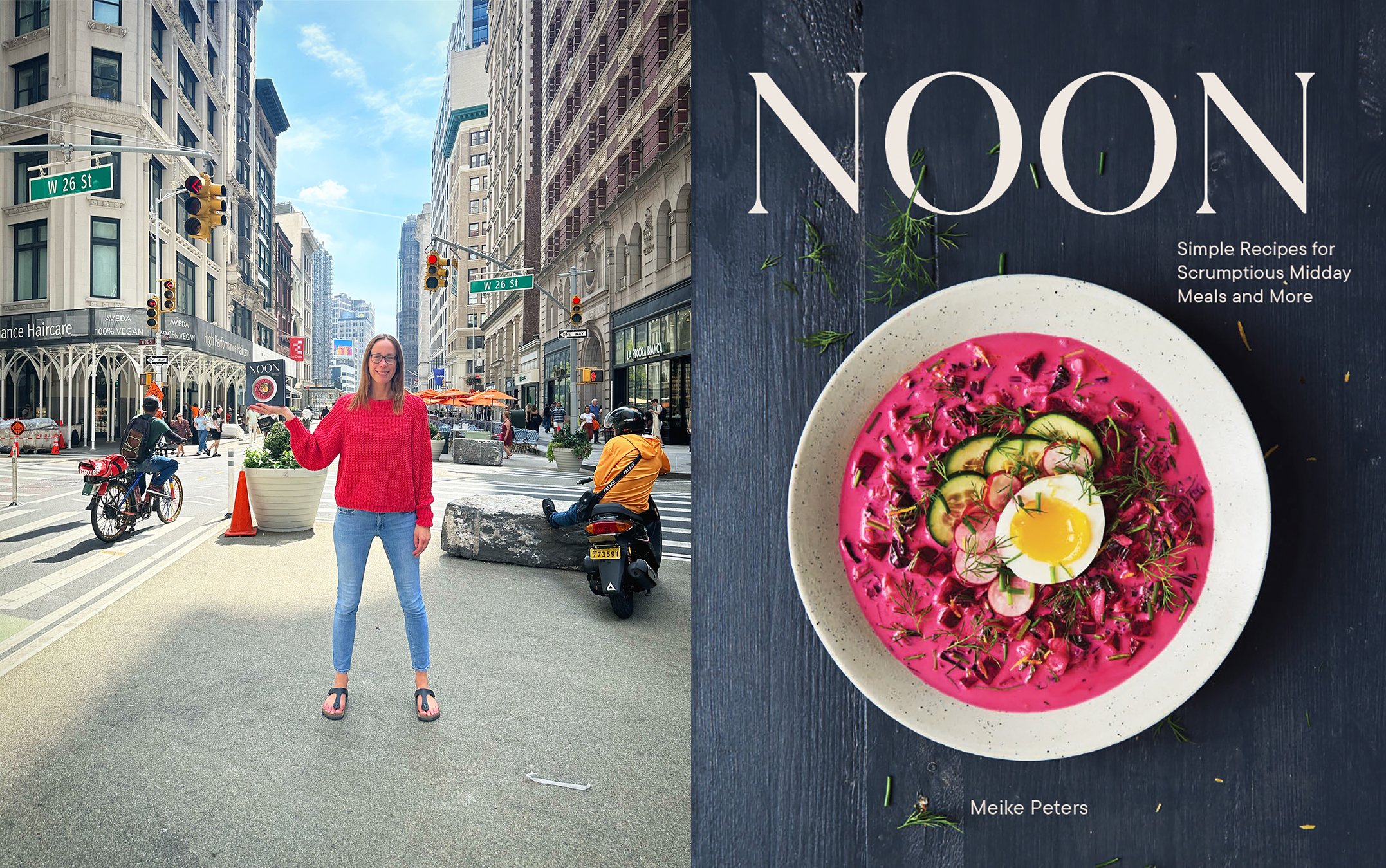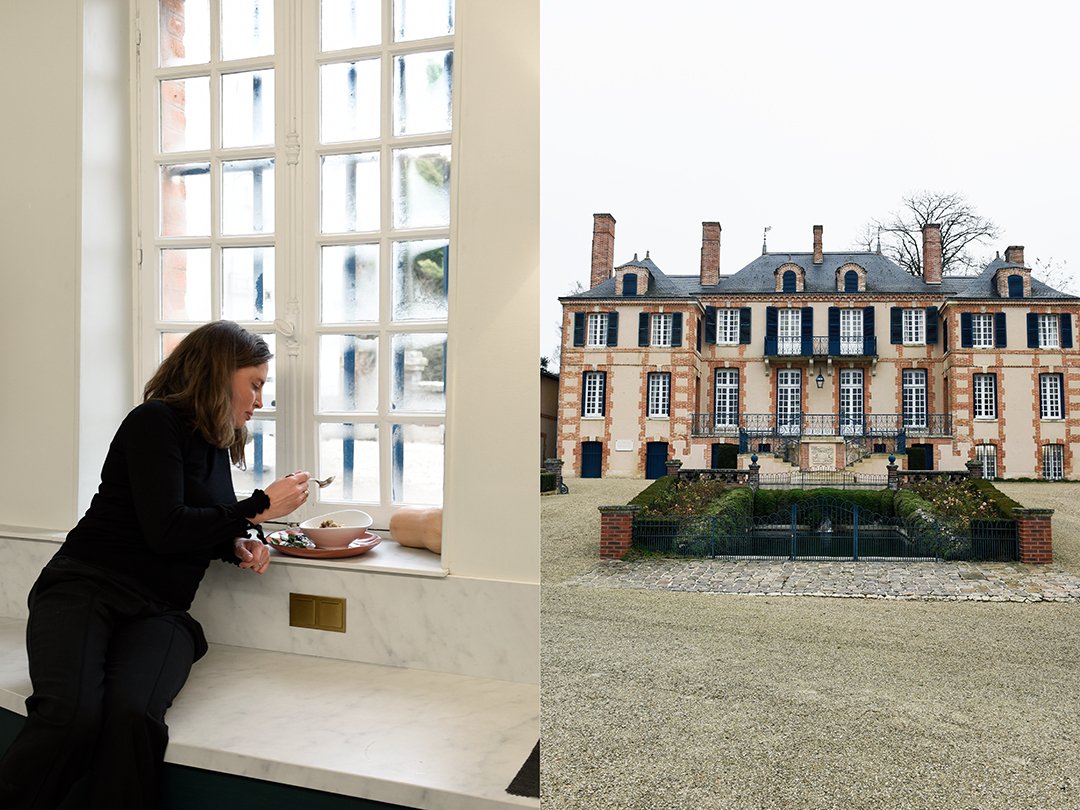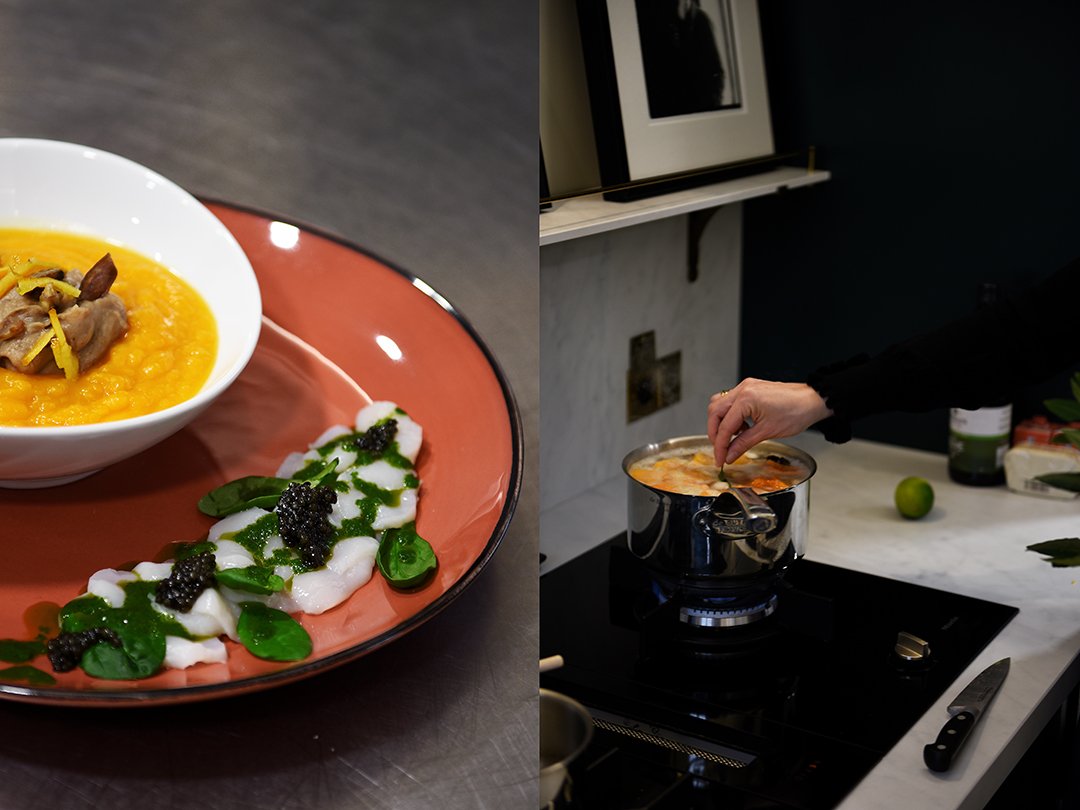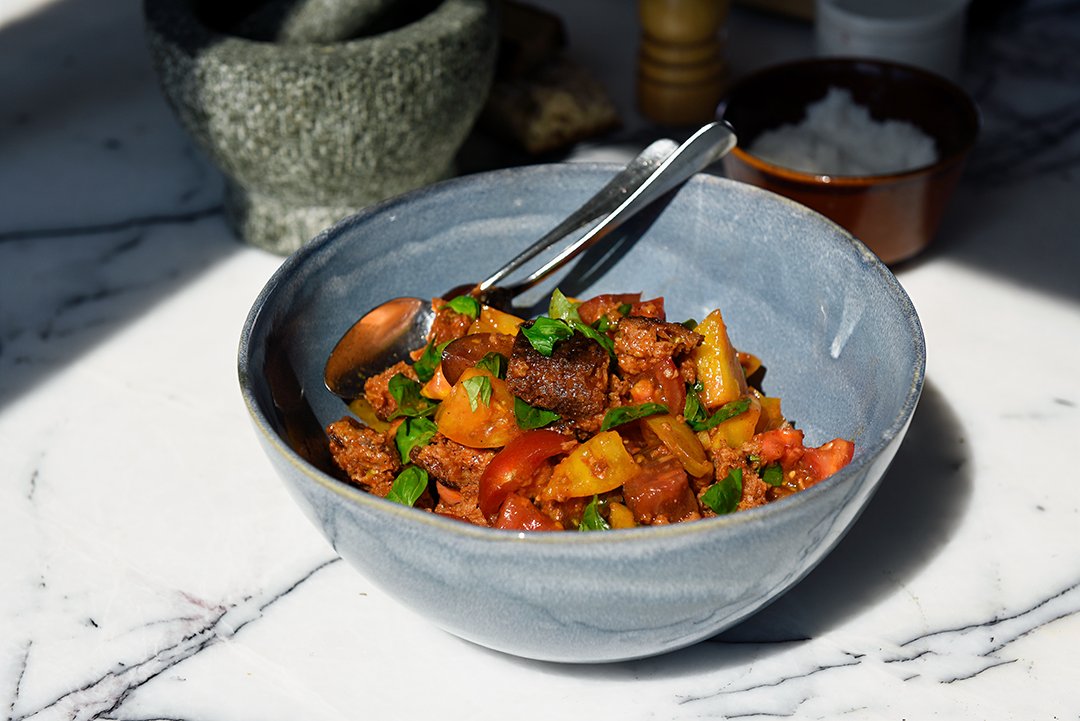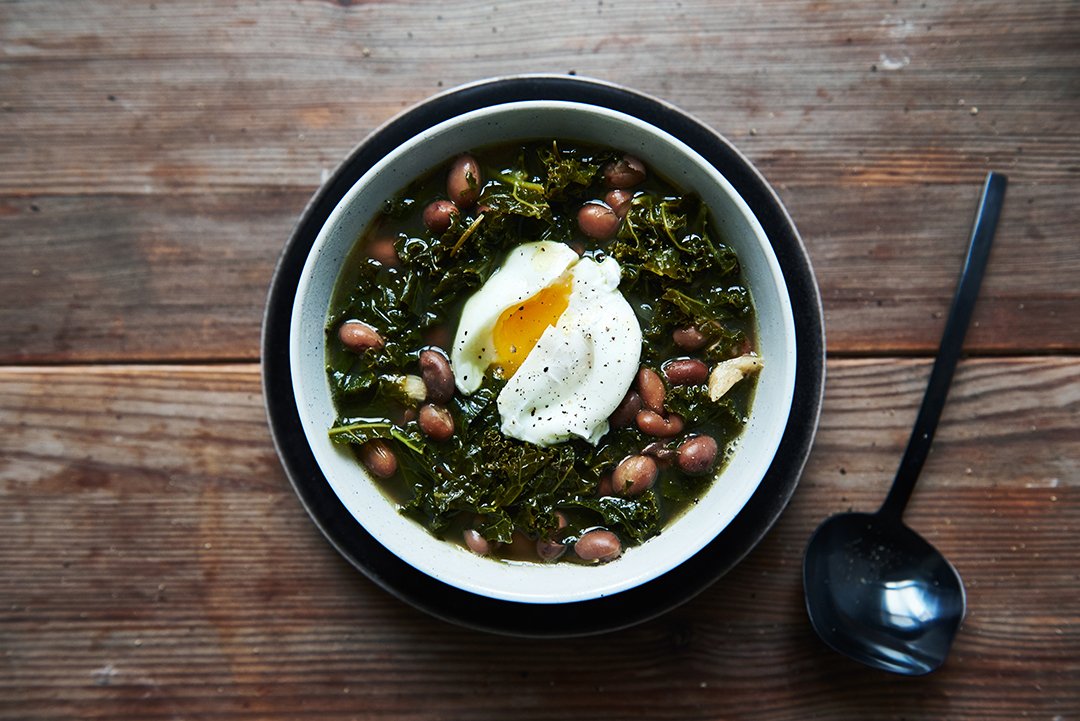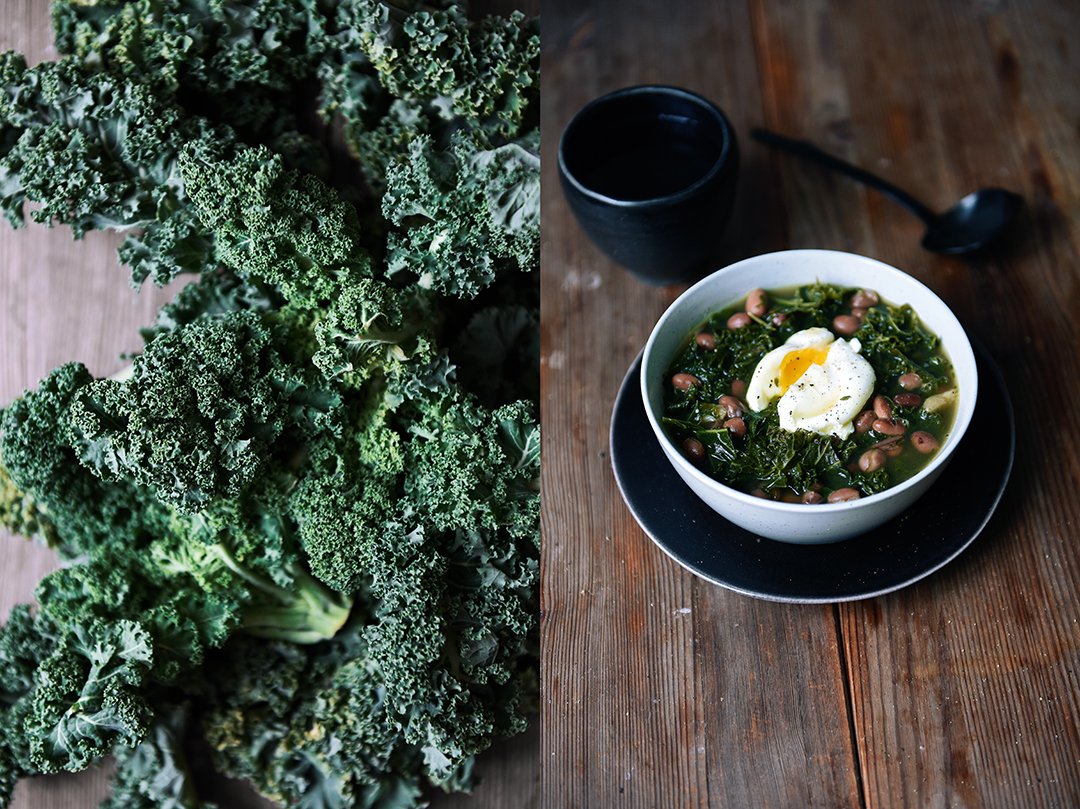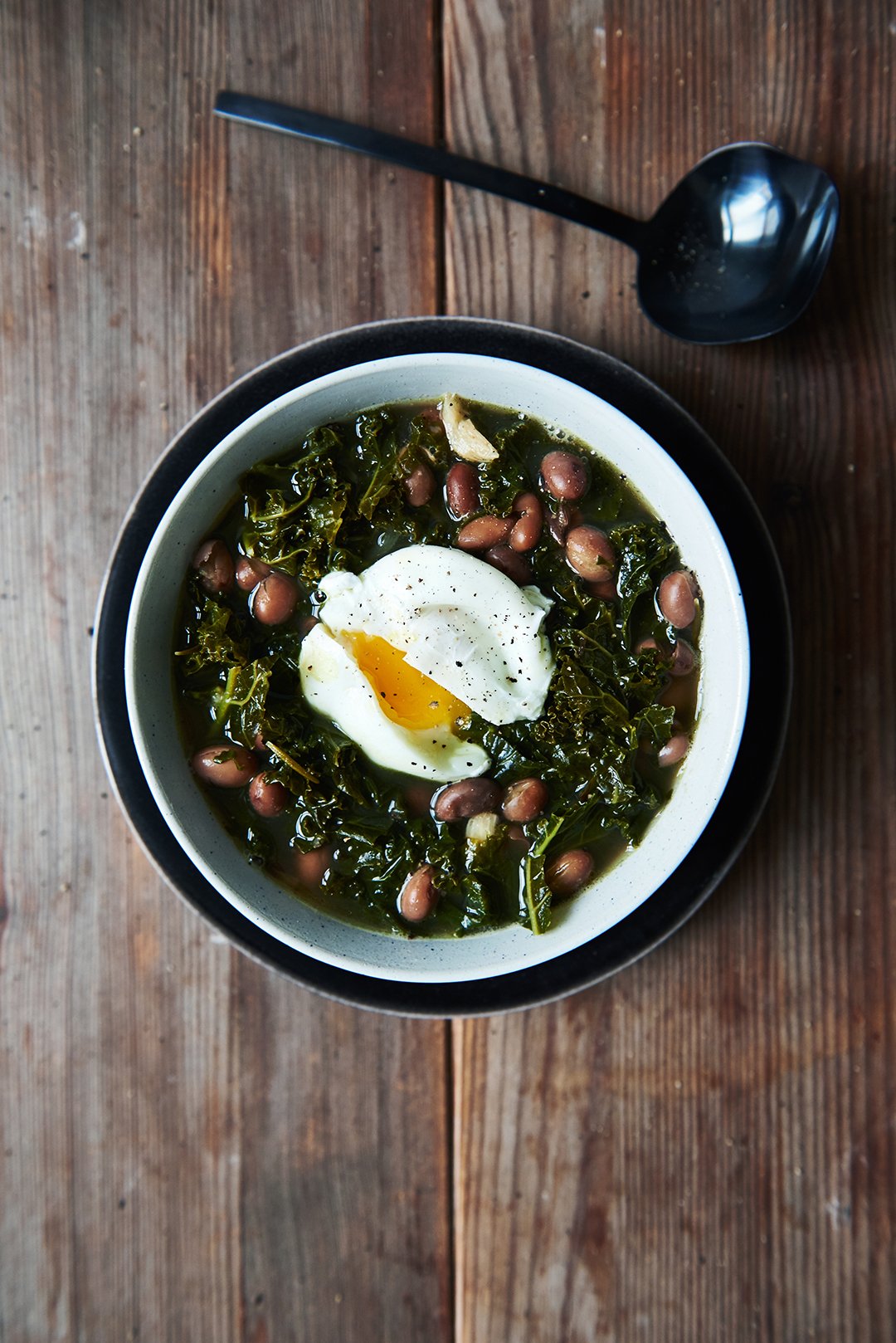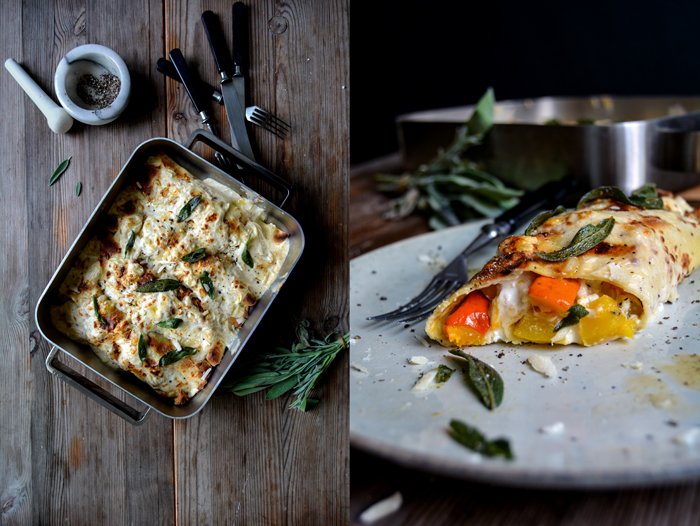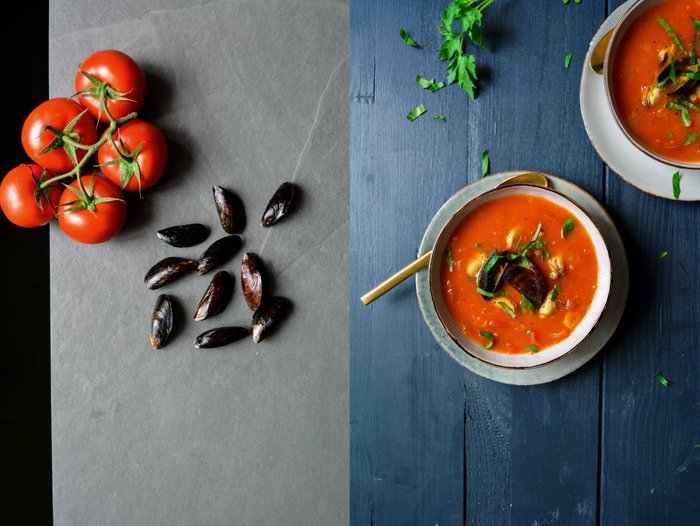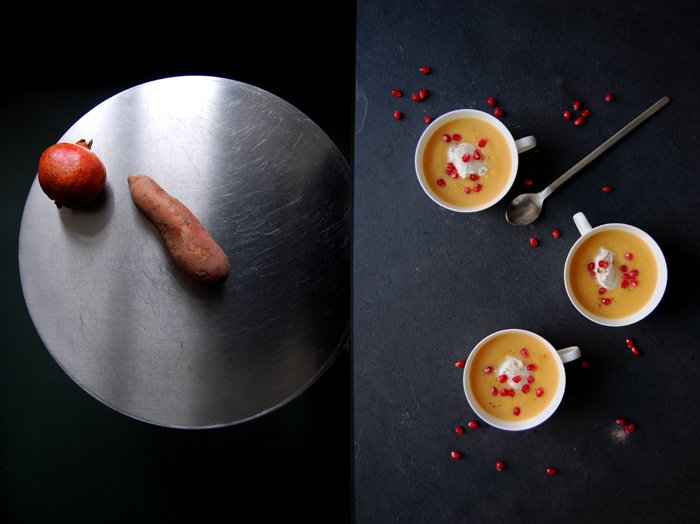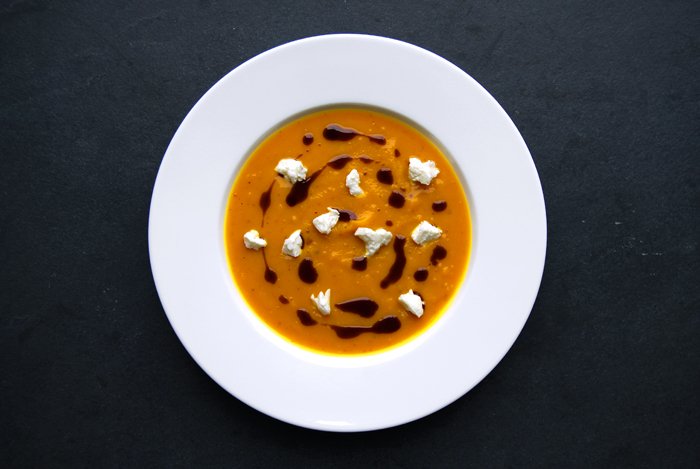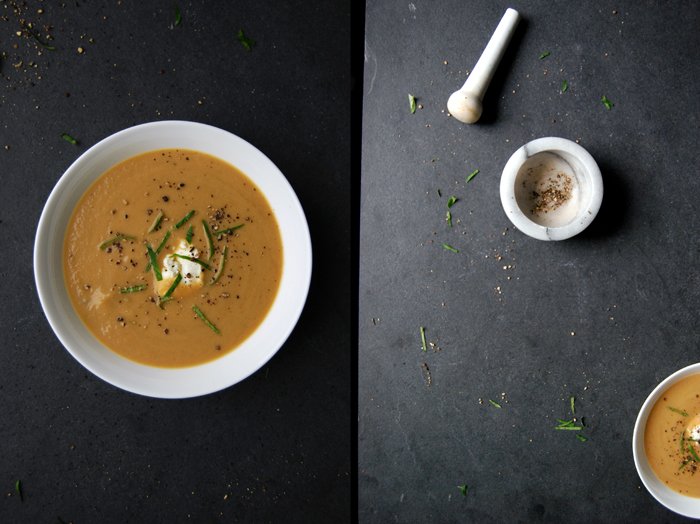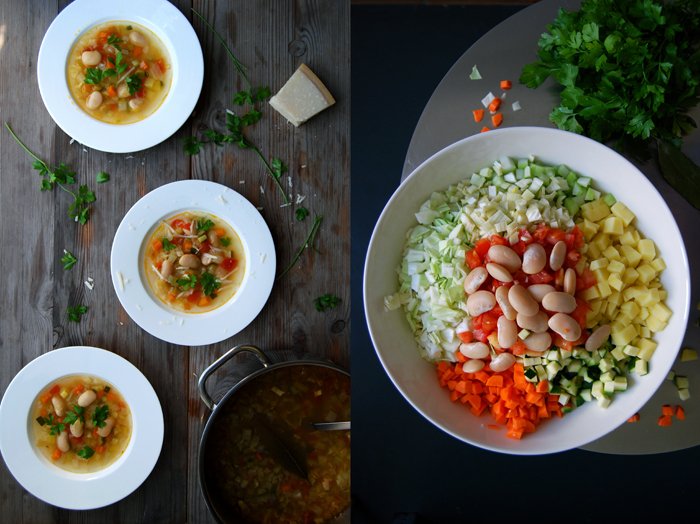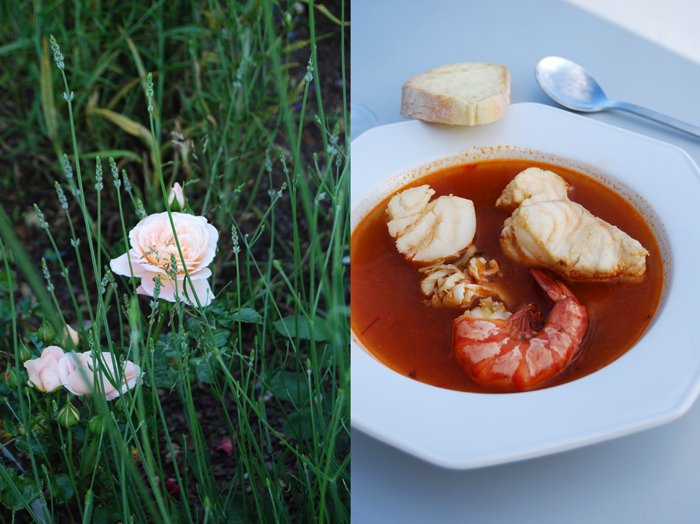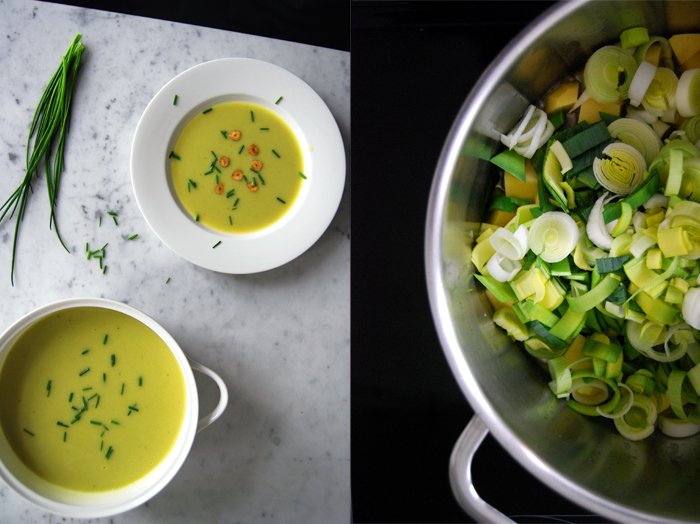NOON is OUT (and on Broadway)!
I just arrived in New York, happy and overwhelmed, on the publication day of this book that means so much to me.
Noon (and NOON) is a gift to yourself, shape that time of the day so that it fits to your own cravings. Make it yours! Use this 1 hour, or these 30 minutes, to make yourself feel good. We plan so much in our lives, every day, we just refuse to often do so when it comes to our own, our very personal needs. And we all need a break but we associate the creation of that break with even more work. So the solution is to find ways (recipes) to reduce that work and time for the preparation of our lunch so that we actually have more time for ourselves when we finally sit down; time to relax and enjoy. I hope NOON can offer you these recipes, but even more, I hope it offers you inspiration to make noon yours.
If you don’t have your copy yet, you can find all the links to order it online here, or support local and buy, or order the book from any bookstore all over world. The chapters in NOON cover Salads, Vegetables, Soups, Sandwiches, Pasta, Seafood, Meat, and Grains & Bakes - so your midday break will definitely be sorted!
Good noon! Meike xxx
The picture of me on Broadway was taken today - right after I had landed in New York - in front of Rizzoli Bookstore where I‘ll be in conversation with Hetty Lui McKinnon on Thursday, September 7th at 6pm - come join us! (For more information, click here)
If you won’t be in New York this week, but if you happen to be in London on October 5th, you can join my conversation with Helen Goh at Building Feasts, hosted by Hanna Geller, with Lallier Champagne and snacks from NOON! (For more information, click here)
Meet In Your Kitchen | Champagne, Scallops & Squash Soup with Vitalie Taittinger
This post is part of my Meet in My Kitchen podcast: How did we get to where we are in life & what does food have to do with it
"Food is love. It's the attention we can give to the people we are sharing life with." - Vitalie Taittinger
48 hours in the Champagne with Vitalie Taittinger - many bottles were popped and no dessert was missed in the making of this podcast episode!
Vitalie was born in Reims, she's the great-granddaughter of Champagne Taittinger's founder Pierre Taittinger and now she is the President of the champagne house. Two years ago, she took over from her father, Pierre-Emmanuel. When I first met the young woman a few years ago, I asked myself if it's a gift or a burden to be born into one of the world's most famous champagne families, if it's freedom or pressure.
"The fact that today we are both responsible for the company, I think this is something very strong in terms of complicité." - Vitalie Taittinger
Clovis is Vitalie's brother, he's the company's Managing Director. When it came to the decision who of the two children would follow into their father's footsteps, the father specifically didn't want to be part of the final decision making process. Instead, for a whole year, the entire team, including the two siblings, pondered on what would be best for the company. For them it was neither about ego nor about clever career moves. It was simply about finding a solution that would be best for Champagne Taittinger; that would be best to keep a tradition alive and thriving. This story says so much about a family and about a region and its mystified product. It says so much about what champagne is about.
The Champagne region is a tiny cosmos built on history, values, tradition, and trust. It goes beyond family although the families that founded the big houses and cultivated champagne over hundreds of years are at the core of this cosmos. It's important to understand that all the champagne houses on their own can't cover the demand of grapes for their production just by using the produce from their own vineyards. It's just not enough. They depend on a large network of small independent growers in the region. There are contracts yet if the growers don't want to cooperate with a champagne house, the champagne house won't survive. They both depend on each other, which is fruitful and only works when their cooperation is built on trust, respect, and the same values. Land is precious and limited - and a UNESCO world heritage since 2015. It's one of the most expensive in the wine world. € 1 million per acre, only topped by Bordeaux's and Burgundy's top appellations.
"A company is a human adventure and when you’re a family you stay very close to these human values." - Vitalie Taittinger
When Taittinger was sold by the extended family in 2005 - a step Vitalie's father didn't agree with - it only took him a year to have the support from a local bank and the backup from the growers to buy the company back and be assured that he would manage to keep producing outstanding champagne.
So when Vitalie joined the company in 2007 quite spontaneously, after studying art and establishing a life independent of Taittinger, she was aware of the responsibility given into her hands but also about the chance she got to keep the story of her family's champagne alive so that one day she could pass it on to the next generation: "The fact that we are a family running the company puts the adventure into a longterm process. I think we are not fighting for figures we fight to make this adventure last and transmit it to the next generation. We want to transmit the best terroir to the next generation and we want to pay attention to the health of the next generation."
"Déjeuner en l'Honneur de Madame Meike Peters" - Merci beaucoup, Vitalie!
The past is deeply woven into the region, it's constantly present, contributing to the mystique of the Champagne: no matter if your in Reims visiting Notre-Dame de Reims, the cathedral chosen for the coronation of the kings of France; if your in Taittinger's cellars 18 meters underground in the Abbey of Saint-Nicaise built in the 13th century in Roman chalk pits dating from the 4th century; or driving to the family's Château de la Marquetterie, an 18th century residence 40 minutes outside Reims, which Vitalie's great-grandfather Pierre bought in 1930. He had fallen in love with this place, a headquarter during World War I, when he spent time there as a cavalry officer in 1915.
It's not a surprise that Pierre was smitten. When I drove passed the vines and through the chateau's gate to visit Vitalie in her kitchen, and record our podcast episode in one of the salons, I was smitten, too, with Vitalie and the chateau.
Vitalie shared a recipe with me that's both cozy and sumptuous, Squash Soup with Chestnut Purée and Scallop Carpaccio with Spinach Pesto and Caviar - easy to prepare in advance and perfect for a New Year's Eve dinner!
Bonne année!
The podcast episode with Vitalie Taittinger is in English. You can listen to the Meet in My Kitchen podcast on all common podcast platforms; there are English and German episodes. You can find all the blog posts about these podcast episodes including my guests’ recipes here on the blog under Meet in Your Kitchen.
Listen to the podcast episode with Vitalie on:
Spotify / Apple / Deezer / Google / Amazon / Podimo
On Instagram you can follow the podcast @meetinmykitchenpodcast!
Squash Soup with Chestnuts, Scallop Carpaccio and Caviar
by Vitalie Taittinger
The scallops are eaten raw and need to be very fresh. If this seems too risky for you, sear the scallops quickly in a little olive oil over high heat on both sides (this takes 2-3 minutes) and season with salt and pepper.
Serves 4
For the scallop carpaccio
10 very fresh scallops
Caviar, adjust the amount to your budget
For the spinach pesto
1 large handful fresh baby spinach leaves, plus 16 small spinach leaves for serving
Olive oil
1 lime
Fine sea salt
Ground black pepper
For the soup
1 liter / 4 1/4 cups vegetable broth
1 butternut squash (about 3 pounds), peeled, seeds removed, and cut into cubes
1 star anise
2 bay leaves
Fine sea salt
Ground black pepper
Crème fraîche, to taste
For the chestnut purée and topping
200g / 7 ounces vacuum-packed whole cooked chestnuts
120ml / 1/2 cup heavy cream, whipped until stiff
2 teaspoons granulated sugar
1 tablespoon freshly grated, or very finely chopped, orange zest
For the scallop carpaccio, keep the scallops in the freezer for a couple hour; this will make it easier to cut them.
For the soup, bring the broth to a boil then add the squash, star anise, and bay leaves, season to taste with salt and pepper, reduce the heat, and simmer for about 30 minutes or until the squash is soft. Remove and discard the star anise and bay leaves. Using a blender stick or blender, purée the soup until smooth then season to taste with salt, pepper, and crème fraîche and cook, stirring constantly, until it reaches the desired taste and texture; cover the pot and keep warm.
For the chestnut purée, set 3 chestnuts aside then purée the remaining chestnuts until smooth (add a little water if necessary) and, using a spoon, gently mix with the whipped cream.
Crumble the 3 reserved chestnuts. In a small, heavy pan, heat the sugar over medium-high heat until caramelized then add the crumbled chestnuts and orange zest; stir and keep warm for serving.
For the spinach pesto, purée the spinach leaves and a little olive oil in a blender until smooth. Add more olive oil until the texture is quite runny then season to taste with freshly squeezed lime juice, salt, and pepper.
Take the scallops out of the freezer. Using a large, sharp knife, cut the scallops very thinly; if they are too hard to cut keep them at room temperature for a few minutes.
Arrange the scallop slices on 4 large plates, drizzle with a little spinach pesto (you might not need all of the pesto), sprinkle with a few spinach leaves and a little caviar. Fill the soup in 4 deep bowls and arrange the bowls on the large plates with the carpaccio. Arrange the caramelized chestnuts and a dollop of the puréed chestnuts on top of the soup and serve immediately.
Meet In Your Kitchen | Moritz, Switzerland & the Grill Royal Family
This post is part of my Meet in My Kitchen podcast: How did we get to where we are in life & what does food have to do with it
"Food is probably the most important thing for me besides breathing. But I guess sex is also pretty important." - Moritz Estermann
When you grow up in the Swiss Prealps and you find your peace with the fact that you live in a tiny village only surrounded by nature, then Switzerland is the best place to live in. However, if at one point you want to know what there is on the other side of the mountains, you have a problem. Then you have to leave.
Moritz Estermann liked his life, tightly woven into a safe net of family, friends, and Swiss food. During the week he would play in the neighbors' fields and barns, the weekends would be all about walks in the mountains together with his parents and brother. And when he could tell his father the names of 20 flowers he would get French Fries in one of the mountain huts. Moritz doesn't want to make it sound like Sound of Music - but it does.
But one day, the Swiss fairy tale ended and Moritz left the mountains behind to move to Berlin. And as he arrived, walking down Strasse der Pariser Kommune lined with its very vertical, very unadorned socialist buildings, he felt home and ready for a new chapter.
"We started at Pauly Bar, moved on to the Grill (Royal) then we went to King Size Bar at 1 at night and left at 6 in the morning, staggering. But I had to be back in the office at 9:30, often working on bookkeeping. It was an absolutely amazing time, I learnt everything this business is about, but you shouldn’t do this. You get bogged down. It’s too much. Your own life falls by the wayside. Completely." - Moritz Estermann
Grill Royal, Kin Dee, Bar Freundschaft, Dottir - Moritz Estermann's name appears behind many raisins in Berlin's gastronomic cake but the man himself stayed a mystery for me for a long time. I had been wanting to meet him for years and it had to happen during a long and tipsy night out at Bar Freundschaft. Introduced by Susan Choi, and soon rebuked by Moritz as I told the sommelier "I'm sure you don't have pastis," the first sentence Moritz ever said to me was: "Don't be so negative!." I felt like a little girl, but he was right, and I got my drink in the end.
So how does a Swiss boy end up in the 'Grill Royal family' at quite a young age? He's not only supervising some of the 'family's' places, but he's also Stephan Landwehr's and Boris Radczun's - the founding fathers - copartner in a few endeavors. How does he start new projects and each and every single one is a success? The answer is very Swiss: Moritz says he understands restaurants and he understands Berlin.
But there's more behind this humble Swiss mind. Moritz has a great connection to his instinct and he completely trusts this instinct. I've seen this talent in the characters of all the people I'm talking to for the Meet in My Kitchen podcast. They can all hear their inner voice and learnt to always listen to it. Moritz instinctively goes to the right places, connects with the right people, feels the inspiration, and then picks up the right projects. It's not luck, his success rate is too good for that. It's a very clear focus on what makes sense and then hard work and discipline to get there.
What I love about people in the gastronomic world is that despite this discipline, they never miss the party. What I love about Moritz on top of this is that he wants to create places that make his customers happy but he also wants to create places where his employees are just as happy to work at. He is part of a new movement of restaurateurs who break with the old system. Yes, he wants to and he has to create profitable places, but that doesn't mean you have to exploit the ones who work for you. It's a new feeling of responsibility, and also awareness, that no matter what your job is, you can always make a difference within your everyday operating range.
"I’m not sure if I really trust the universe or if I am, and was, simply naive, but I was never scared of the world outside. I believe it’s a great privilege, growing up in an environment where fear doesn’t exist, simply not being forced to confront it and learning to live with it." - Moritz Estermann
Moritz pays a lot of attention to the people around him. And he pays the same attention when it comes to his food and cooking at home. He shared his current favorite recipe with me, Pappa al Pomodoro. This frugal Italian dish is made with just a few ingredients and that's the reason why each of them should be of exceptional quality. It reminded me a lot of Panzanella - a Tuscan bread salad - yet the stale bread is soaked in tomato sauce and not in vinaigrette and water. Officially it's a thick soup, eaten warm or cold. Roughly chopped sun-kissed heirloom tomatoes, fantastic sourdough bread with a dark crust, the finest olive oil, and a very simple yet very tasty tomato sauce make you forget about frugality and simply indulge in a very fruity, surprisingly light, summery lunch that takes you right to the soft hilltops of Tuscany.
The podcast episode with Moritz Estermann is in German. You can listen to the Meet in My Kitchen podcast on all common podcast platforms; there are English and German episodes. You can find all the blog posts about these podcast episodes including my guests’ recipes here on the blog under Meet in Your Kitchen.
Listen to the podcast episode with Moritz on:
Spotify / Apple / Deezer / Google / Amazon / Podimo
On Instagram you can follow the podcast @meetinmykitchenpodcast!
Pappa al Pomodoro
by Moritz Estermann
Serves 2
For the tomato sauce
350ml / 1 1/2 cups tomato passata
3 large cloves of garlic, finely chopped
Olive oil
Fine sea salt
Black pepper, freshly ground
For the Pappa al Pomodoro
Around 1/3 of a 750g / 1 2/3 pound loaf of stale white sourdough bread (with crust, the weight of the stale bread is roughly 225g / 1/2 pound)*
Olive oil (the best you can afford)
Around 450g / 1 pound ripe tomatoes (organic, heirloom, ideally various types)*
1 large handful fresh basil leaves, torn
Freshly squeezed lemon juice, to taste (optionally)
* The ratio of fresh tomatoes to bread should be roughly 2:1
Preheat the oven to 160°C / 325°F (preferably convection setting).
For the tomato sauce, add the passata, garlic, and a dash of olive oil to a medium saucepan, season to taste with salt and pepper then bring to a boil, reduce the heat, and simmer for about 20 minutes. The sauce should be light red and runny, not thick, and taste fruity; season to taste with salt and pepper.
Tear the bread into bite-sized pieces, spread on a large baking sheet, and drizzle with a little olive oil. Toast the bread in the oven until crispy but not dark. Transfer the warm bread to a large bowl and add the tomato sauce. The bread should be well covered in sauce and soak it all up but it shouldn’t swim in the sauce; let it sit for at least 5 minutes, the bread should have soft parts and parts that are still a little firm.
Cut the tomatoes into bite-sized pieces. Add the fresh tomatoes and basil to the bowl with the soaked bread, season to taste with salt, pepper, and a squeeze of lemon then gently and briefly mix with your hands; it should be chunky, not mushy.
Enjoy immediately!
Clean-Out-The-Fridge Soups
Food52 asked me about my approach to soups. Not just any soups, but big-flavor, clean-out-the-fridge soups to cure the winter blues. I love them now, but that wasn't always the case. We're like friends that had to learn to love each other. So I shared our bumpy love story, my basic soup formula, and three soup recipes from my new book, 365, on food52.com. Converted and convinced that a soup can be one of the best things to find on your dining table after a long day of work, I also decided to share my article on these pages here (and you can find two of the recipes from 365 below):
I have a new habit, recently, I often have soup for lunch, which is actually my breakfast as I only have green tea with lemon in the morning. My relationship with liquid foods wasn’t always so harmonic. Soups and stews are very popular in Germany, thick lentil, pea, or potato soup enriched with smoked sausage (Knackwurst or Knacker) is a German winter classic. As a child, I ate it, but I wasn’t particularly fond of it. There was something missing, or maybe I just wasn’t ready yet. Then the eighties came, the Nouvelle Cuisine reached home kitchens and all of a sudden soups where always puréed and as bright as candy: yellow squash, purple beet, squeaking green pea pod. Shallow bowls filled with colorful compositions, smooth and shiny, conquered the menus but unfortunately not my palate. Despite their vibrancy, they didn’t excite me. This is essential to me, and my taste buds - I want, I need food to excite me. So I took a break of many, many years until I found the kind of soup that I like.
Fast-forward to today and it has become a constant in my weekly culinary routine. My basic soup formula is very simple:
1. Canned legumes and dried lentils that don’t need to soak overnight. I always have a vast collection of cans filled with butter beans, cannellini, borlotti (cranberry) and kidney beans on my pantry shelves, and bags of black beluga lentils, dark green French Puy lentils, and yellow and red lentils. Legumes make a soup rich and wholesome, they add heartiness and a nutty touch. It's what turns a light soup into a proper meal.
2. Cleaning out the vegetable drawer. This drawer is a treasure box that needs to be emptied once in a while. Leafy vegetables, kale, chard, and spinach that start to wilt, sturdy roots like potatoes, parsnip, and beets that lie forgotten, the whole range of winter and summer squash, fresh beans, peas, and tomatoes. Every season has its produce that’s just waiting to crown a soup.
3. Using homemade or quality store-bought broth. My mother taught me to always cook my own broth, with leftover vegetables, chicken, duck, and beef bones, with fresh herbs and whole spices like allspice, peppercorns, and juniper berries. And a bay leaf, always a bay leaf. I then freeze it in 4-cup portions to have my tasty broth right at hand whenever I need it. I never use instant broth as I find it adds an artificial flavor. Broth is the base of a soup, it adds its taste to all the other ingredients and therefore deserves utmost attention.
Soups can easily follow the seasons and the cook’s mood. I want to throw them together spontaneously, quickly, without too much planning or overthinking. A quick look in the pantry and fridge and my mind starts playing. A soup is a simple, a frugal dish, but that doesn’t mean it can’t be exciting. Playing with flavors is a boundless game, playing with textures is at least as rewarding.And varying toppings allows the cook to serve a soup repeatedly without anyone noticing. Crunchy bacon cubes or dukkah, a dollop of velvety mascarpone or ricotta, a fried or poached egg, or a crumbled hardboiled egg, fried herbs like sage or rosemary, or roasted fruit like grapes, apple, pear, or apricot.
In my new book, 365: A Year of Everyday Cooking & Baking, I share a recipe for each day of the year, following the seasons and also the rhythm of the week, from Monday to Sunday, from quick and simple weekday dishes to luscious - and more time-consuming - roasts, stews, and cakes on the weekend. Soups are a constant treat in this rhythm, especially during the colder part of the year. There’s a cozy kale and borlotti bean soup for example, cooked in a flavorful duck broth (recipe from 365 below and on food52.com) - a clear vegetable broth works just as well - and it's the perfect cure for winter blues. It’s crowned with a poached egg and when you cut through the yolk and let it run into the broth, it adds a creaminess that’s even better than cream; as an added bonus: it only takes twenty minutes for dinner to be ready.
A golden squash, parsnip, and sweet potato soup - basically the tasty finds of a fridge clean out - could be kept chunky but with a nod to the good old Nouvelle Cuisine, I purée it and also go for a more extravagant topping that makes this recipe fit for a Christmas table. Red grapes roasted with woody rosemary until soft and shriveled, and a dollop of whipped orange mascarpone turn this dish into a festive stunner (recipe from 365 onfood52.com). However, crunchy bacon bites would make it even heartier and also quite appealing.
One of my favorite soups is the minestrone because there are no rules and limitations. Every vegetable, every combination that the cook finds fitting, works. For my green minestrone, I use green beans, peas (which I always have in my freezer), and zucchini, but that’s not set in stone, and add tiny meatballs refined with lime and arugula. It gives it a fresh citrusy note, similar to lemongrass. This is the speediest of all weekday soups. Once the meatballs are mixed and shaped, the entire soup and meat only need to cook for about 5 minutes (recipe below).
So what changed my mind, what made me fall in love with soups after so many years of skepticism? First, the taste, I had to find combinations that excite me, but then there’s something else. Sitting in front of a bowl of steaming soup is one of the coziest things I can think of. It makes me feel good while I eat it and this feeling stays. A soup is a friend of my mind and my body.
Kale and Borlotti Bean Soup with Poached Eggs
from ‘365 – A Year of Everyday Cooking & Baking’ (Prestel, 2019)
Serves 4
For the soup
Olive oil
1 medium onion, cut into quarters
2 large cloves garlic, cut in half
7 ounces (200 g) trimmed kale leaves, cut into strips
5¼ cups (1.25 liters) homemade or quality store-bought duck, chicken, or vegetable broth, hot
1 small bunch fresh thyme
1 medium sprig fresh rosemary
1 large bay leaf
Fine sea salt
Finely ground pepper
1¼ cups (250 g) drained and rinsed canned borlotti (cranberry) or pinto beans
For the topping
4 to 8 large eggs
Coarsely ground pepper
For the soup, in a large pot, heat a splash of olive oil over mediumheat and sauté the onion and garlic, stirring, for a few minutes or untilgolden and soft. Add the kale, stir, and cook for 1 minute then add the hotbroth, thyme, rosemary, and bay leaf. Season to taste with salt and finelyground pepper, reduce the heat, and simmer for 20 minutes or until the kale istender. Remove and discard the herbs then add the borlotti beans and cook for 1minute. Season to taste with salt and finely ground pepper and keep warm.
For the topping, bring a small saucepan of salted water to a low simmer.Crack 1 egg into a small bowl. Hold a large spoon just over the surface of thewater and gently pour the egg onto the spoon. Lower the spoon into the waterand hold until the egg white starts to turn white then use a tablespoon togently scoop the egg off the large spoon. Poach the egg for 3 minutes. Using aslotted ladle or spoon, transfer the egg to a plate. Poach the remaining eggsthe same way, adjusting the heat as needed to maintain a low simmer. It’s bestto poach 1 egg at a time, but you can cook 2 at once.
Divide the soup among bowls, place 1 to 2 eggs in the middle of each bowl, and sprinkle with a little coarsely ground pepper. Cut the tops of the eggs with a sharp knife and serve immediately.
Green Minestrone With Lime-Arugula Meatballs
from ‘365 – A Year of Everyday Cooking & Baking’ (Prestel, 2019)
Serves 2-4
14 ounces (400g) ground beef
2 large cloves garlic, crushed, plus 1 large clove garlic, cut in half
2 ounces ounces (60g) arugula leaves, finely chopped
1 teaspoon (heaping) freshly grated lime zest
Fine sea salt
Finely ground pepper
Extra-virgin olive oil
3/4 pound (340g) trimmed mixed green vegetables (such as green beans, frozen peas, zucchini, Brussels sprouts, broccoli, or kale, cut into bite-size pieces if necessary)
4 1/4 cups (1 liter) homemade or quality store-bought vegetable broth, hot
1 tablespoon freshly squeezed lime juice
1 bay leaf
1 spring onion (green part only), thinly sliced
Combine the ground beef, crushed garlic, arugula, lime zest, 1 teaspoon of salt, and a generous amount of pepper in a large bowl and mix with your hands until well combined. Form the mixture into 38 roughly 1-inch (2.5 cm) meatballs.
Heat a splash of olive oil in a large pot over medium heat. Add the garlic and sauté for 1 minute. Add a little more oil and the vegetables and sauté, stirring, for 1 minute. Add the hot vegetable broth, lime juice, and bay leaf, season to taste with salt and pepper, and bring to a boil. Add the meatballs then reduce the heat, cover, and simmer gently for 4 to 6 minutes or until the meatballs are just cooked through and the vegetables are tender. Season to taste with salt, pepper, and additional lime juice.
Divide the soup among deep bowls, sprinkle with the spring onion, and serve immediately.
10 Pumpkin recipes to inspire your Thanksgiving table
Thanksgiving calls for pumpkin on the table, lots of pumpkin! Since winter squash is so versatile, I wouldn't mind having a festive meal dedicated to these gorgeous beauties in orange, green, and golden yellow. Nibbles, soup, main, and dessert - I'd be up for a pumpkin celebration.
When it comes to the main course, we have two options, we can either go vegetarian and in this case I strongly recommend the Pumpkin Crespelle with Ricotta and Sage - although the Pumpkin Gnocchi wouldn't be a bad choice either. However, if you need some meat on your plate, I'll share my suggestions with you tomorrow. But we can already start thinking about the sides and there's a universe of options. Gnocchi always work, there's no doubt that their spongy softness is perfect to soak up the juices of a roast, or you can go for maple orange pumpkin with sage and walnuts from my tartine recipe below (without the bread); pumpkin, stilton, and rosemary is also a very pleasant combination (taken from another sandwich recipe below). Roast it, cook it, sauté the squash - thinly sliced - in a pan (like in the Hokkaido Pumpkin Spaghetti), or bake a soufflé. If you want to keep the crowd entertained while you're cooking, serve the Pumpkin Pesto, Date, and Chèvre Sandwich and everybody will be happy.
Click on the titles for the recipes
Green Minestrone with Lime-Arugula Meatballs
Sometimes I am asked by a reader to come up with a certain recipe. Quite often it's a dish connected to a childhood memory of theirs, a food experience saved many years ago, and now they're hoping to find this specific flavour again. But it's a tricky thing, it's almost impossible to relive something as an adult and expect the same satisfaction that we felt back then when we were young.
I used to love Dutch coconut sheets for breakfast, which is as weird as it sounds. This is compressed dessicated coconut, pressed into thin sheets and, to make it even more appealing, they were either pink or pale white. I was obsessed with them. After a culinary break from this delicacy, I tried them again years later and I was so disappointed. But there's another Dutch classic, which still lives up to my memories, and I enjoy it with the biggest passion whenever I pull it out of my oven: sticky honey cake.
At the end of this winter, I got asked to share a traditional German hot chocolate recipe, which my reader, who lives in the US, connects with the time he spent in Germany as a child. Somehow, I never felt in the mood for it, and my hot chocolate is also a rather simple creation made of milk, unsweetened cocoa powder, and ground cinnamon and cardamom, which is not a traditional German take on this drink. I'm sorry, I'll try to write about it next winter.
But last week, someone dropped a comment on Instagram, telling me that I haven't made a soup in a long time - and this person was right! She lives in Asia and asked for a soup that she can have with her morning rice. I don't think that someone who lives in Asia, needs a German girl to tell her how to make a fragrant broth with ginger, spices, and lemon grass, so I thought about something that I could share from my background. Our summers spent in Malta made me fall for minestrone, and when I cook this warming soup with just green vegetables - like fresh beans, peas, and zucchini - it tastes like spring. To turn it into a full lunch, I add tiny meatballs refined with lots of chopped arugula and lemon zest. The strong aroma of the citrus fruit reminds me of the Mediterranean but at the same time, it adds the same lemony freshness that you know from a clear broth made with ginger. Enjoy!
Green Minestrone with Lime-Arugula Meatballs
Serves 2-4
For the meatballs
ground beef 400g / 14 ounces
fresh arugula leaves, finely chopped (with a knife or in a blender), 1 large handful / 50g
zest of 1 lime (1 heaping teaspoon)
garlic, crushed, 2 cloves
fine sea salt 1 teaspoon
a generous amount ground pepper
For the soup
olive oil
garlic, cut in half, 1 clove
green vegetables (a mix of trimmed green beans, peas, and zucchini), beans and peas cut into bite size pieces, about 350g / 12 ounces
vegetable broth, hot, 1l / 4 1/4 cups
freshly squeezed lime juice 1 tablespoon
bay leaf 1
fine sea salt
ground pepper
For the topping
ramp leaves, thinly sliced, 2 and / or spring onion, thinly sliced, 1
For the meatballs, in a large bowl, combine the ground beef, chopped arugula, lime zest, garlic, salt, and pepper and mix until well combined. Wet your hands and form the mixture into tiny meatballs.
For the soup, in a large saucepan, heat a splash of olive oil over medium heat. Add the garlic and cook, stirring, for about 1 minute. Add the vegetables, stir, and cook for 1 minute. Add the broth, lime juice, and bay leaf, season with salt and pepper to taste, and bring to the boil. Add the meatballs and bring to the boil again. Reduce the heat to medium, cover with a lid, and simmer for 4 minutes. Split 1 meatball to check if it's done. Season the soup with salt, pepper, and additional lime juice to taste.
Serve the soup in deep bowls, sprinkled with ramps and / or spring onion, and enjoy warm.
Chickpea Potato Soup with Rucola Pesto, Lemon and Fried Chickpeas
A couple days ago, we left Berlin to visit the gardens of Sanssouci Palace a few miles outside Berlin. The palace used to be the Prussian king, Frederick the Great's summer residence, built in the 18th century. The building itself is beautiful but the terraced garden is stunning. I love being there in summer, when it's all lush, green and in bloom but there's a certain melancholic mood woven into the misty air on a cold, grey day that fits this time of the year perfectly. It's pure silence, no leaves left on the trees, the marble sculptures high up on their pedestals looking down on us, wrapped in jackets and scarves on our way to another one of the park's winter attractions, a Christmas market and its warming mulled wine.
When we got home I felt so frozen that I promised myself I'd make a rich soup the next day. I cooked canned chickpeas and potatoes in broth, puréed it into a velvety, smooth soup and sprinkled it with fresh rucola pesto, lemon zest and fried chickpeas. It's a great winter soup, thick and refreshing, and just right before tomorrow's feasting begins.
I wish you a wonderful and peaceful Christmas with your loved ones. Enjoy the moments of love, joy and good food! xx
Chickpea Potato Soup with Rucola Pesto, Lemon and Fried Chickpeas
You won't need all the pesto for the soup but I don't like making pesto in small batches. We used the remaining pesto to spread on toasted dark bread, which we enjoyed with the soup.
Serves 2-4
For the soup
olive oil
medium onion, chopped, 1
garlic, crushed, 2 large cloves
potatoes, peeled, cut into cubes, 250g / 9 ounces
canned chickpeas, rinsed and drained, 250g / 9 ounces, reserve 4 tablespoons for the topping
vegetable broth 900ml / 3 3/4 cups
bay leaf 1
salt
ground pepper
nutmeg, preferably freshly grated
ground cumin 1/8 teaspoon
For the pesto
rucola (arugula) leaves 60g / 2 ounces
Parmesan 25g / 1 ounce
pine nuts 25g / 1 ounce
olive oil 75 ml / 1/3 cup
salt 1/8 teaspoon
For the topping
freshly squeezed lemon juice
olive oil
lemon zest
black peppercorns, crushed in a mortar
For the soup, heat a splash of olive oil in a large pot and sauté the onion on medium-heat for a few minutes until golden and soft. Add the garlic and cook for 1 minute. Add the potatoes and chickpeas, stir and cook for 1 minute. Pour in the broth, add the bay leaf, and season with a little salt and pepper. Lower the heat and simmer, uncovered, for 20-25 minutes or until the potatoes are soft.
While the soup is cooking, purée the ingredients for the rucola pesto in a blender or food processor. Season to taste and set aside.
For the fried chickpeas, heat a splash of olive oil in a small, heavy pan on high heat. Add the reserved chickpeas, close with a lid immediately (the chickpeas will pop) and fry for 1 minute or until golden. Take the pan off the heat.
When the potatoes are soft, discard the bay leaf and purée the soup in a blender, food processor or with an immersion blender until smooth. Season with salt, pepper, nutmeg and cumin to taste, bring to the boil, and simmer for 1 minute, stirring constantly. Divide the soup between bowls, drizzle with a little lemon juice and olive oil and sprinkle with rucola pesto, lemon zest, crushed pepper and the fried chickpeas.
Saffron & Mussel Tomato Soup
It's getting colder here in Berlin, all of the trees in front of our windows are finally naked, their last colourful leaves swept away in a single stormy night. Before the winds came, the light in our living room was golden and warm, filtered through autumn's pretty yellow linden leaves. Now that they're gone, the light is much harder. All of a sudden, the city seems a bit more harsh, which made me long for a cozy soup.
Seafood has been on my mind for weeks, sweet mussels from the North Sea, adding their fine taste to a thick, fruity tomato soup refined with aromatic saffron. It warms the body and caresses the soul, what else could you want on a cold and misty November day? This dish may seem elaborate but that's not at all the case, it's a quick one. The fruit's red juices only cook for a bit longer than 10 minutes and the mussels sink into a fragrant broth of white wine and spices for just 5 minutes. I use the wine, infused with a soft hint of the sea and the noble taste of saffron, to stir into my glowing soup. It's supposed to serve 3-4, which I still believe is quite realistic, but we loved it so much that we almost emptied the large pot of soup in one go at lunchtime. We were hungry.
Saffron and Mussel Tomato Soup
Serves 3-4
For the mussels
mussels in shells 1 kg / 2 1/4 pounds
olive oil
medium onion, finely chopped, 1
garlic, thinly sliced, 2
large cloves
white wine 200ml / 3/4 cup plus 2 tablespoons
bay leaves 2
saffron threads 1/8 teaspoon / 1g
sea salt 1/2 teaspoon
ground pepper
For the tomato soup
olive oil
tomatoes, finely chopped, 1 kg / 2 1/4 pounds
garlic, thinly sliced, 1 big clove
broth, used to cook the mussels, 400ml / 1 2/3 cups
a pinch of sugar
sea salt
ground pepper
For the topping
fresh parsley, roughly chopped, 4 heaping teaspoons
Rinse and scrub the mussels under cold water and cut off the beard, discard any broken mussels.
For the mussels, heat a splash of olive oil in a large pot and cook the onion and garlic on medium heat for a few minutes or until golden and soft. Add the wine, bay leaves, saffron, salt and pepper, stir and bring to the boil. Turn the heat down to low, gently add the mussels to the pot, shake the pot or stir with a slotted ladle and close with a lid. Cook for 5 minutes or until the shells open, shake the pot once or twice while cooking. Take the mussels out with a slotted ladle, discard any mussels that don’t open. Measure 400ml of the mussel broth, together with the onions and the bay leaves, and set aside. Peel the mussels out of their shells, leave about 6-8 inside the shells for the topping of the soup (optional). Set the mussels aside.
Heat a splash of olive oil in a large pot, add the tomatoes and garlic and cook for 4 minutes on medium-high heat (open), stir once in a while. Add the mussel broth with the onions and bay leaves, sugar, salt and pepper and cook for about 7 minutes (open) or until the tomatoes are soft and the soup is thick. Season to taste and, if necessary, chop the tomatoes with a knife if they are too chunky, or purée the soup in a food processor. Stir in the mussel meat, divide the soup between bowls, sprinkle with fresh parsley and pepper and garnish with the mussels in their shells.
meet in your kitchen | Alex's Kusksu Soup with Beans, Goat Cheese & Eggs
I'm in love - with my dear Maltese / British kitchen hosts Alex and Benjamin, with their beautiful 400 year old palazzo in Zebbug, their wonderful friends who joined us for a delicious traditional lunch and with the most gorgeous kitchen island I've ever seen in my life. A huge slab of Carrara marble on top of a simple wooden shelf took my breath away as I walked into the gorgeous kitchen. It's one of those rooms that you never want to leave again. It's welcoming and cozy, with an old fire place on one side, sparkling copper pots and pans hanging on a long limestone wall and a rustic wooden table at a glass door facing a bright courtyard. Here, you can cook, bake, chop and stir in peace and with plenty of space. A lot of the fresh produce comes straight from the garden, the cheese is made by a lady who lives in the village and Alex has enough ideas, energy and creativity to throw fantastic dinner parties on a weekly basis. It's my Mediterranean heaven.
The house is a gem and every detail feels effortlessly right. Found and restored by Alex more than 20 years ago, he saw the old walls' beauty built of thick Maltese limestone. The charismatic man used his sense and sensitivity to bring his home's true soul to life. Alex believes that everybody can create a nice house but not necessarily a home - a home needs a past, present and future and this palazzo has plenty of them all. It's a peaceful oasis, tranquil and calm, in the middle of an ancient village. Hidden doors and winding corridors, steps and balustrades cut out of the island's typical golden stone turn it into a playful labyrinth. The rooms furnished with elegant antiques are surrounded by walls more than 1m (3 feet) thick, the charm is rather introverted, here, the focus isn't on the world outside but surprises with dreamy views onto the lush green garden and into the courtyard with an almost cloistral atmosphere.
We met to cook and what is more fitting in this scene than an old Maltese recipe - the traditional Kusksu. The locals call it peasant food, I call it the most comforting, nurturing and scrumptious soup. Thick like a runny risotto, it's made with lots of onions, concentrated tomato paste, fava beans and peas, enriched with Maltese short cut pasta - the Kusksu pasta resembling couscous - eggs poached in the fruity juices and Gbejna, the islands' fresh goat cheese. The soft egg and cheese melt into the soup and spread their fine flavors, it's delicious!
Alex uses the tasty greens from their garden in Gozo, Malta's sister island. The fertile soil around another old house of his - this time from the 18th century - supplies the passionate cook and his food loving sous chef Benjamin with fresh produce all year round. I have only seen pictures of Casa Mezzodì in the village of Kercem but it looks like paradise.
Alex loves to use his self-taught kitchen skills to treat his friends to casual lunches and extravagant dinner parties. I'm very happy to be one of them, thanks to Benjamin who I've been visiting for years due to his amazing treatments. Originally from London, Benjamin left England a while ago to live with his partner on the Mediterranean archipelago and work as a reflexologist. He is simply the best, he knows the foot map and its pressure points so well that I trust him blindly.
Kusksu - Maltese Pasta Soup with Beans, Peas, Eggs and Goat Cheese
Adapted from the fantastic 'The Food and Cookery of Malta' by Anne and Helen Caruana Galizia.
Serves 4
olive oil
medium sized onions, thinly sliced, 2
garlic, crushed, 2 cloves
tomato paste 3-4 tablespoons
water 2l / 8 1/2 cups
fava beans, fresh or frozen, shelled, the outer skin removed, 350g / 12 1/2 ounces
bay leaves 2
peperoncino, chopped, to taste
salt and pepper
Kusksu pasta (or any other rice-shaped pasta) 100g / 3 1/2 ounces
peas, fresh or frozen, shelled, 200g / 7 ounces
eggs 4-8
small fresh goat cheeselets (like Maltese Gbejna or soft Chèvre) 4-8
Parmesan, freshly grated
Heat a generous splash of olive oil in a large pan and soften the onions and garlic for about 10-15 minutes, they should be golden but not dark. Add the tomato paste and cook for 1 minute. Pour in the water, stir in the beans, bay leaves and peperoncino and season with salt and pepper. Simmer for about 30 minutes or until the beans are al dente. Add the pasta and cook on low heat for about 10 minutes, stir once in a while. Add the peas, take the pan off the heat, cover and let it sit for about 10 minutes. Season to taste. Gently slip the eggs and goat cheeselets into the hot soup and let them cook, covered, on low heat for a few minutes. Serve the soup when the egg whites are still slightly soft, sprinkle with Parmesan and black pepper.
What fascinates you about old houses - and especially - their restoration?
I have been very privileged in my life to have been able to do a job I thoroughly enjoy. In my opinion, old houses allow us to revisit the past, which although can never be recreated, is fascinating to dip in to. It gives me a great deal of personal satisfaction to revitalise a period building and adapt it to contemporary living, whilst preserving the atmosphere and charm of past centuries.
You collect antiques. Some say it's impossible to stop collecting once you got started, do you feel the same? Where do you look for new finds?
Some of us suffer from Horror Vacui, and I suppose it is fair to say that there is a magpie in all of us. However, jesting apart, an old house needs props, rather like a stage and it is the love of old houses which leads one to forming collections.I mainly find things at auctions and house clearance sales. I also like rummaging on the barrows at Portobello Road whenever I happen to be in London.
As a passionate cook you host wonderful lunches and dinner parties for your friends. How important are these gatherings for you?
I am a very gregarious person by nature and nothing gives me greater pleasure than to see friends and family gathered round the table sharing food I have prepared. Besides, houses need to be filled with laughter and friends, and our house really comes alive when we give a dinner or a lunch party. As my partner is British, we frequently have house guests to stay. This always presents an opportunity ask our Maltese friends to lunch or dinner to meet them.
When did you start cooking and who or what was your inspiration?
As I have always been (overly!) fond of my food, I remember experimenting with recipes at about 16. Although, I suppose that I started taking cooking seriously in my twenties. One of my earliest inspirations was the great Elizabeth David, who pushed boundaries in her time and was seminal in bringing the Mediterranean cuisine to the rest of Europe. Malta at the time was still very British, with a tendency towards food of the meat and two veg variety, in spite of the great choice of Mediterranean vegetables available in local markets. I discovered a worn paperback copy of Elizabeth David’s Italian Food in the local RSPCA second hand bookshop, and it was this publication that flung open the doors for using local ingredients, and I still dip in to it to this day. Later on I discovered The Food and Cookery of Malta by Anne and Helen Caruana Galizia, and this publication has been my most thumbed cookery book since, as it revives all the traditional and wonderful Maltese dishes.
Some of the fresh produce you use in your kitchen is grown by your gardner in Gozo, from Malta's sister island, where you also spend a lot of your time. What are the differences between living in Malta and in Gozo?
We are very fortunate to have a weekend house called Casa Mezzodì in the village of Kercem in Gozo, where the garden is looked after by a very special man called George Spiteri. George is passionate about growing indigenous crops using organic methods, and we are very privileged to be able to have these vegetables made available to us.Gozo is essentially composed of rural communities living off the land and the sea. In spite of the close proximity, Gozitan kitchens produce different fare to Maltese ones. Gozitans being particularly inventive with stretching ingredients, creating delicious pies and stews made with the wonderful vegetables and fresh fish available.While we rarely venture out to restaurants in Malta, in Gozo we take every opportunity to visit the charming fishing village, turned resort, of Xlendi which is a mere five minutes from our home. There, we visit our favourite waterfront restaurants, and especially enjoy the cheese-less Gozitan “pizza” or ftira as it is known locally, which is topped with unusual layers of thinly sliced potato, tomatoes, capers, olives, anchovies and onions. The freshness of the ingredients, without the heaviness of cheese, on the crispiest of bases is the most heavenly combination.
What do you love about the Maltese cuisine?
The most simple, and frugal of ingredients, are always transformed into delicious dishes, which never fail to please. The stuffing of vegetables with rice, or meat, or fish…the wonderful pies, the vegetable stews, all combine European and Arabic influences and truly reflect Malta’s extraordinary geographical location at the crossroads between North, South, East and West.
Where do you find inspiration for new creations in the kitchen?
This wonderful age of communication has meant that one can browse for hours through fascinating blogs, such as yours, exploring new territory. In a sense, other peoples kitchens are brought in to your own at the click of a mouse, and perhaps, we do not fully appreciate how previous boundaries have now come down.
What was the first dish you cooked on your own, what is your first cooking memory?
I made a pea soup using terribly uneconomical petit pois, and best quality bacon rashers which I had pilfered from the deep freeze in my parents’ kitchen. Despite the velvety sweetness, and the beautiful emerald green colour of the soup, my long suffering mother was unamused that I had helped myself to her ingredients!
What are your favourite places to buy and enjoy food in Malta?
I pay a weekly visit to the local farmers’ market at Ta’ Qali, which is about ten minutes from where we live. I have my favourite suppliers and will buy aubergines, green peppers and cauliflowers from Serafin, who comes from Siggiewi, which is a neighbouring village. I buy all my tomatoes, salads, cucumbers and qara baghli (the superb local sweet marrows) from Anna who hails from Mgarr. Of course, the produce is all seasonal, so it’s broccoli and cabbages in the winter, strawberries in the spring, and watermelons in the summer. I love cooking and eating according to the time of the year, and knowing that my ingredients have sometimes been freshly picked just hours before being brought to the market.Y
ou shared a recipe for Kusksu on eat in my kitchen, what are the memories you connect with this dish?
We always had Kusksu on Good Friday when we were children, as this dish satisfied the very strict Roman Catholic fasting obligations. Once you had eaten it for lunch, it was very filling and would keep you going until supper time. It is a firm favourite of mine as it truly reflects Malta’s cosmopolitan cuisine, and besides, I get to use the broad beans, peas, and onions which George Spiteri has grown in Gozo.
If you could choose one person to cook a meal for you, who and what would it be?
Kelina Sultana was a Gozitan cook who worked for dear family friends. Sadly she died some years ago, but her lampuki pie (local fish pie) was the best I have ever tasted, and I would love to taste it one more time.
You're going to have ten friends over for a spontaneous dinner, what will be on the table?
It depends entirely upon what is in the fridge! For example, looking right now it would probably be a pasta dish using a variety of fresh vegetables, or a risotto with some chicken stock I made yesterday.
What was your childhood's culinary favourite and what is it now?
As a child I loved my mother’s lasagne. Today it would be a risotto a la Milanese.
Do you prefer to cook on your own or together with others?
I am quite happy cooking on my own, but really appreciate it when my partner Benjamin offers his assistance as a sous chef.
Which meals do you prefer, improvised or planned?
Either, I have no preference at all. Both can be fun, and have their appeal.
Which meal would you never cook again?
Farfalle with strawberry sauce, courtesy of Sophie Grigson in the London Sunday Times. Fortunately, I had offered our guests a trio of pasta dishes, so it was easy to avoid the disastrous results of combining strawberries with pasta!
Thank you Alex!
Parsnip & Sweet Potato Soup with Pomegranate & Mascarpone
Roots and fruits are a great match for puréed soups, they merge to a deliciously warming treat full of fragrant flavours. They often balance each other out, like the strong parsnip which has such an overpowering impact that it's best in combination with other ingredients that underline its subtle sweetness.
I went for robust sweet potatoes, a great team player, and juicy pomegranate seeds, their sourness is a wonderful addition to the earthy aroma. And, of course, their dramatic look is quite a stunner on the root's pale pink! When I cook these kind of soups I like to spare on heavy cream, I just stir in a little bit to support the natural creaminess which is already given through the puréed vegetables. It doesn't need much of the dairy product otherwise it will turn into a heavy meal and that's the opposite of what I'm after. I prefer to refine the roots with another kind of milkiness, a discovery I made in October for my parsnip and pear soup. I used whipped mascarpone cheese, just a small spoonful, but this time I mixed it with cardamom and a bit of orange juice, it literally melted into the root composition!
Parsnip & Sweet Potato Soup with Pomegranate & Cardamom Mascarpone
For 4 as a starter you need
parsnip, peeled and chopped, 300g / 10.5 ounces
sweet potato, peeled and chopped, 200g/ 7 ounces
medium onion, chopped, 1
vegetable broth 800ml / 2 pints
bay leaf 1
rosemary 1-2 small sprigs
olive oil
heavy cream 75ml / 2.5 ounces
salt and pepper
honey 1-2 teaspoons, to taste
ground cardamom
mascarpone 100g / 3.5 ounces, for the topping
freshly squeezed orange juice, to taste, for the topping
pomegranate, peeled, 1, for the topping
In a large pot, heat a splash of olive oil and cook the onion on medium heat until soft. Add the parsnip and sweet potato and cook for a minute. Pour in the broth and add the bay leaf and rosemary. Season with salt and pepper and cook for about 20 minutes or until the roots are soft. Take the rosemary out after 10 minutes and the bay leaf when the soup is done. Purée the soup in a blender or with a stick mixer, stir in the heavy cream, honey and a pinch of cardamom, season to taste.
Whisk the mascarpone with 1/4 teaspoon of cardamom and a splash of orange juice. Add a bit of heavy cream if it's too thick and season to taste.
Serve the warm soup with a dollop of mascarpone, pomegranate seeds and some cardamom sprinkled on top.
Maltese Minestrone with Tyrolean Crêpes Frittaten
This dish combines the two culinary worlds which influence my kitchen activities the most, Malta's Mediterranean cuisine and Tyrol's cosy comfort food. I cooked a warming minestrone the way I know it from my Maltese granny Edith, with lots of pumpkin, zucchini (qarabaghli in Maltese) and kohlrabi. This soup can take the most varied collection of vegetables so I also added some cauliflower, celery stalk, potatoes and carrots. It's a deliciously sweet broth of all the strengthening fruits of the season, and once the vegetables are chopped, it only takes 15 minutes !
Whenever I sit in Edith's kitchen in Msida enjoying this comforting soul food, she sprinkles freshly grated parmesan over the steaming dish, but here in the North, I wanted to add something richer to satisfy our strong appetite. In the cold season, I'm a big fan of saturating additions to light and healthy soups, Tyrolean frittaten, called Flaedle in the Swabian region in southern Germany, are one of my first choices. They are made of thin crêpes refined with chives, rolled up in a tight wrap and cut into slim strips. Frittaten look like pancake snails and turn a minestrone into a special treat, the eggy pastry adds a hearty feel to this meal which I absolutely love about wintery soups!
Maltese Minestrone with Tyrolean Crêpes Frittaten
For 4-6 people you need
For the frittaten
plain flour, sieved, 70g / 2.5 ounces
salt 1/8 teaspoon
organic egg, beaten, 1
milk 120ml / 4 ounces
chives, snipped 3 tablespoons
butter, to fry the crêpes
Mix the flour, salt, egg and milk to a smooth dough (with an electric mixer) and let it sit for 15 minutes before you mix in the chives.
In a non-stick pan, heat a teaspoon of butter. Pour in a ladle of the dough, holding the pan in your hand and turning it so that the dough spreads evenly and very thinly. The temperature should be on medium-high as the crêpes won’t need more than 1 minute on each side once the heat is set right. When the crêpe is golden on both sides take it out and continue with the remaining dough. Always heat a teaspoon of butter before you add new dough to the pan. Roll up each crêpe very tightly and cut into thin strips (snails).
For the minestrone
medium onion, chopped, 1
cauliflower, cut into small pieces, 160g / 5.5 ounces
butternut squash, peeled, cut into small cubes, 160g / 5.5 ounces
zucchini, cut into small cubes, 160g / 5.5 ounces
kohlrabi, peeled, cut into small cubes, 50g / 2 ounces
carrot, peeled, cut into small cubes, 80g / 3 ounces
potato, peeled, cut into small cubes, 100g / 3.5 ounces
celery stalk, cut into small cubes, 1
medium sized tomato, cut into small cubes, 1
broth, hot, 1.5l / 3 pints
garlic, crushed, 2 cloves
bay leaf 1
spring onion, thinly sliced, 2
salt and pepper
olive oil
In a large pot, heat a splash of olive oil and fry the onion for a few minutes on medium heat until golden and soft. Stir in the garlic and cook for 1 minute. Add a little more oil and the chopped vegetables (apart from the spring onions), stir and cook for 1-2 minutes. Add the hot broth and the bay leaf, season with salt and pepper and cook for 15 - 20 minutes. Stir in the spring onion, season to taste and serve with the frittaten.
Pumpkin and Sweet Potato Soup with Chèvre
My pumpkin phase has to take a little break, it's going overboard. I had one last idea for soup in mind before leaving the pretty squash at the market instead of carrying one after the other into our kitchen. What I came up with is pumpkin, sweet potato and carrot cooked and puréed to a velvety soup topped with mild chèvre and pumpkin seed oil to melt into the sweet flavours.
This is the perfect end to an annual obsession I always fall for as soon as the leaves turn golden. The first bowl of my warm treat put me at ease, I felt ready to jump into a new phase! The composition combined all I could ask for, it was smooth and thick. This soup isn't light and liquid, it's more like a purée, a potage that is rich enough to satisfy your hunger after a busy day. I really like these kind of soups that can replace a whole meal instead of just being a starter to tickle the appetite. All you need are some slices of juicy ciabatta sprinkled with olive oil on the side to enjoy the entire comfort of this dish.
Pumpkin and Sweet Potato Soup with Chèvre
For 4 people you need
pumpkin (squash), without the fibres and seeds, cut into cubes, 700g / 1.5 pounds (Hokkaido with skin or peeled butternut or Musquée de Provence pumpkin)
sweet potato, scrubbed and rinsed, cut into cubes, 500g / 1 pound
large carrot, peeled or scrubbed, cut into cubes, 1
medium onion, finely chopped, 1
garlic, crushed, 1 clove
bay leaf 1
water 1 l / 2 pints
olive oil
a pinch of mace or nutmeg
salt and pepper
soft chèvre, crumbled, 100g / 3.5 ounces, for the topping
pumpkin seed oil, for the topping
In a large pot, heat a splash of olive oil and cook the onions on medium heat for a few minutes until soft and golden. Add a little more oil and the pumpkin, sweet potato, carrot and garlic. Stir and cook for 2-3 minutes. Add the water and bay leaf and bring to the boil. Season with salt, pepper and mace and cook for about 30 minutes or until the vegetables are soft (simmering). Take out the bay leaf and purée the soup with a stick mixer or in a blender. Season to taste and serve sprinkled with pumpkin seed oil and a few crumbles of the chèvre.
Heaven and Earth - Parsnip and Pear Soup
Heaven and Earth, Himmel und Erde! In the German Rhineland area where I grew up, we have a popular traditional dish which is named after the elements where the ingredients for this meal grow. Heaven and Earth, Himmel und Ääd in the Rhineland dialect, combines mashed potatoes with a sweet apple compote. It's often served with black pudding but it started as a vegetarian dish for the poor in the 18th century.
Today's soup was inspired by this idea of the elements but I replaced the potato with parsnip and the apple with pear. It's a sweet and earthy composition cooked in a strong meat broth. I used venison stock as I had some left from the game cooking session in my mother's kitchen a couple weeks ago. It added a warm and hearty touch to the soup which I refined with lots of garlic, a bay leaf, thyme and rosemary. I cooked it for only 25 minutes until the roots were soft before I puréed it into a velvety treat for cold autumn nights. The flavours were so strong that it could take a little bit of heavy cream stirred in and a dollop of mascarpone with some flowery marjoram sprinkled on top.
Parsnip and Pear Soup
For 2 as a main or 4 as a starter you need
parsnip, peeled and chopped, 300g / 10.5 ounces
large crunchy pear, peeled, cored and chopped, 1, about 200g / 7 ounces
medium onion, chopped, 1
garlic, quartered, 3 big cloves
meat or vegetable broth 800ml / 2 pints
bay leaf 1
a small bunch of thyme
a sprig of rosemary
olive oil
heavy cream 50ml / 2 ounces
salt
ground pepper plus black peppercorns crushed in a mortar for the topping
mascarpone, crème fraîche or sour cream 4 heaped teaspoons, for the topping
fresh marjoram leaves, thinly sliced, a small handful, for the topping
In a large pot, heat a splash of olive oil and cook the onion on medium heat until soft. Add the parsnip, garlic and pear and cook for a minute. Pour in the broth and add the bay leaf, thyme and rosemary. Season with salt and pepper and cook for 25 minutes or until the roots are soft.
Purée the soup in a blender or with a stick mixer. Stir in the cream, season to taste and serve with a dollop of mascarpone and some marjoram and crushed black pepper on top.
Minestrone alla Genovese with Zucchini, Beans and Parmesan
A minestrone simmering on the cooker puts me a into a comfortable mood, the smell and taste reminds me of the kitchens of all the great cooks in my family and it makes me feel at home! I'm very lucky as I'm surrounded by a few women who have mastered the art of a good minestrone.
My Maltese granny Edith cooks her vegetable soup with courgette, marrows and potatoes and I learnt from her that a little parmesan sprinkled on top makes all the difference. The cheese melts into the warming broth and adds a hearty touch to it. My mother goes with the seasons and uses whatever her vegetable garden offers. Beans, cabbage, peas, potatoes, carrots, the list is long and inspiring. She walks through her garden with a big basket in her hand and picks the fruits and vegetables that fit her mood. She taught me to chop everything into small cubes and blanch each vegetable in the broth separately. This way you avoid some vegetables becoming too soggy and soft while others stay crunchy. I don't always do this, sometimes I cook it all at once, it depends on the texture I want to achieve.
My minestrone never tastes the same, I like to try out new variations and this one was inspired by the north of Italy, the Minestrone alla Genovese! This warming soup is so rich in flavours, cooked with cabbage, dried butter beans, zucchini, carrots, potatoes, fennel, tomatoes, celery and leak, I listened to both women to be rewarded with a very satisfying result, I chopped the vegetables into little cubes which would have pleased my mother but I cooked them all at once for not more than 20 minutes. I just cooked the soaked dried butter beans separately as they needed about an hour. After I filled my flavourful soup into the plates, I scattered some parsley leaves and grated Parmesan over it, thanks to Edith!
When I cook minestrone, I cook lots of it as I like to put a few portions in the freezer for a quick lunch or dinner. Once the chopping is done, it just needs another half an hour, so you might as well prepare a bit more. You could also add some little pasta like Anellini or Risini to make the dish a bit richer.
Minestrone alla Genovese
For a large pot of around 4l / 8.5 pints of minestrone (for about 8-12 people) you need
big dried butter beans, soaked over night, 200g / 7 ounces
large onion, chopped, 1
white cabbage, cut into small cubes, 200g / 7 ounces
carrots, cut into small cubes, 150g / 5.5 ounces
zucchini, cut into small cubes, 150g / 5.5 ounces
leek, cut into small cubes, 100g / 3.5 ounces
potatoes, cut into small cubes, 200g / 7 ounces
fennel bulb, cut into small cubes, 100g / 3.5 ounces
large celery stalk, cut into small cubes, 1
large tomatoes, cut into small cubes, 2
broth, hot, 2.8l / 6 pints
garlic, crushed, 3 cloves
bay leaf 1
salt and pepper
olive oil
Parmesan, grated, for the topping
fresh parsley leaves, a handful, for the topping
In a large pot, cook the soaked beans for about an hour or until al dente, drain and set aside.
In a large pot, heat a splash of olive oil and fry the onion for a few minutes on medium heat till golden and soft. Add the garlic and cook for 1 minute. Add a little more oil and the chopped vegetables, stir and cook for 1-2 minutes. Add the hot broth, the beans and bay leaf. Season with salt and pepper and cook for 20 minutes. Season to taste and serve sprinkled with Parmesan and parsley.
A quick Fish Soup with Saffron and Vermouth
Bright red, with chunks of firm fish filet and king prawns, this was one of the best fish soups I have ever eaten! It was so rich in aromatic flavours, saffron, vermouth, thyme and bay leaf that it makes my mouth water when I think about it. My mother cooked the soup with wolfs fish and cod, we went to the market to get monkfish but her fish monger didn't have it that day. Our choice was good, the fish tasted nice and strong and we enjoyed every single bite of it!
The soup is made of a concentrated fish broth, lobster works as well, which you can either prepare yourself beforehand or use a store bought one of good quality (my mother used a broth she had in the freezer). Once you have the broth ready in the pot, the basis of this soup, you only need 20 minutes in the kitchen before you can fill your plates with this delicious fish soup. We added saffron, vermouth, herbs and a couple vegetables and let it simmer for 10 minutes before we threw in the fish for another 7 minutes, that's it. A sumptuous meal in such a short time!
Traditionally, this soup is topped with mayonnaise, you can either use the one from yesterday's artichoke with 3 dips or my garlicky aïoli. The traditional Provençal Bouillabaisse is served with an aromatic Rouille (I haven't shared a recipe for this yet) which is made with saffron and spicy chili peppers. We got so excited over the quick preparation of our soup and the beautiful German white wine we already savored while cooking, that we simply forgot about this creamy dip. We didn't enjoy it any less without it, with ciabatta bread on the side and the most amazing view of soft hills in juicy shades of green behind my mother's blossoming garden. It was a good day!
Fish Soup with Saffron and Vermouth
For 4 people you need
fish ( firm filets of loup de mer, monkfish, wolfs fish or cod and king prawns), cut into chunky pieces, 800g / 1 3/4 pounds
fish or lobster broth 1200ml / 2.5 pints
vermouth 100ml / 3.5 ounces (we used a mix of Noilly Prat and Pernot)
shallots, finely chopped, 2
medium carrot, finely chopped, 1
garlic, crushed, 1 clove
tomato paste 2 tablespoons
thyme, the leaves of 3 sprigs
parsley, finely chopped, the leaves of 3 sprigs
bay leaf 1
a pinch of saffron
a pinch of cayenne pepper
salt and pepper
olive oil
In a large pot, heat a splash of olive oil and sautée the vegetables and garlic on a medium heat for 2 minutes. Add the tomato paste and mix with the vegetables. Deglaze with the vermouth and let it cook for 1 minute. Add the broth, bay leaf, thyme and parsley and let it cook for 10 minutes on a medium heat. Season with saffron, cayenne pepper, salt and pepper to taste and take out the bay leaf.
Add the fish and let it simmer on a medium-low heat for about 7 minutes until the fish is done. Don't overcook it, the texture should stay firm.
Serve with white bread (you can also roast it under the grill with a few drops of olive oil) and a spoonful of mayonnaise.
Tomato Soup with Goat Cheese Nocken
A few weeks ago I received one of my mother's recipe faxes again. The list of her culinary adventures and recommendations was long (as always) and included Tyrolean Nocken made of goat cream cheese mixed with finely chopped hard mountain cheese. Nocken are dumplings, they can be made of potatoes like Italian gnocchi, bread or flour but there is also an uncooked version in which case they are made of cream cheese or ricotta. I've made these a couple times but never mixed with hard cheese. This sounded interesting, especially because I've been wanting to make tomato soup for weeks which seemed like the perfect combination to me. The fruity soup, thick and sweet, refined with some strong goat milk and cheese flavours!
I slipped in some herbs as well, fresh basil for the tomatoes after the soup was done and chives for the Nocken. The soup is a strong concentrate of 2 pounds of tomatoes, chopped and cooked with skin and seeds for just 10 minutes. Some garlic rubbed with salt to a smooth paste, a tiny bit of broth, some vinegar and the basil, that's all it needed. Apart from the Nocken, which I scooped with a wet spoon, to place a white dot in the middle of a glowing red bowl!
I served the tomato soup warm, some prefer it cold but that's not really my thing.
Tomato Soup with Basil and Goat Cheese Nocken
For 2 people as a main or 4 as a starter you need
ripe tomatoes, chopped, 1 kg / 2 pounds
broth 125ml / 5 ounces
garlic 2 big cloves
balsamic vinegar 1 tablespoon plus more to taste
a pinch of sugar
fresh basil leaves, roughly chopped, a small handful
salt and pepper
olive oil for frying
For the Nocken
fresh goat cream cheese 125g / 4.5 ounces
hard mountain cheese (like Appenzeller or Gruyère), finely chopped, 20g / 1 ounce
chives, snipped, 1-2 tablespoons
salt and pepper
Rub the garlic with 1/4 teaspoon of salt under a big knife to a smooth paste.
In a big pot, heat a splash of olive oil, add the garlic paste and tomatoes and cook for 4 minutes on medium temperature (open). Add the broth, vinegar, sugar, salt and pepper and cook for 5 minutes (open). Take off the heat and purée with a stick mixer or in a blender. Season with salt, pepper and vinegar to taste and stir in the basil.
Mix the goat cream cheese, hard mountain cheese and chives, season with salt and pepper to taste. With a wet tablespoon form oval Nocken and place on top of the soup. Serve immediately.
A Field in the Forest, Beelitz and Asparagus Soup
A couple weeks ago I had a conversation about asparagus with my aunt and uncle, we talked about the various tastes depending on the vegetable's origin. The soil, the climate and weather have such a big influence on these delicate stems. I've enjoyed great asparagus in my life, green and white, but we agreed that the best is from Beelitz, an area 50 km (30 miles) outside Berlin. I always wanted to visit to see the large fields covered in foil keeping them dark, to watch the harvest and buy my asparagus directly from one of the farmers.
It's May, the seasonal peak for asparagus and there's no time to wait any longer! A few days ago we got on a train heading South-West to search for the famous Beelitz asparagus fields. We took our bikes with us to explore some of the quiet and hidden corners of the countryside, the forest and the fields and I can say that we found what we were looking for, asparagus heaven!
We got off the train at a tiny station, an old timber framed house which seemed abandoned for years. We noticed that we were the only travelers on the platform, we were happy about that and enjoyed the silence. When you live in the city the absence of noise is one of the biggest luxuries! The early afternoon sun felt just right, soft and warm, we jumped on our bikes, excited to start our trip.
Beelitz is a small town, it's peaceful and pretty. Old brick houses line the narrow cobblestone streets, little trees along the pavements blossoming in bright pink, a perfect picture book scene. It didn't take us long to leave the town behind us. The world in front of us turned into a glowing green, majestic trees with fleshy leaves, lilacs blooming at every corner spreading their sweet scent. The grass on the wide meadows looked fresh and juicy. We crossed a river and filled our lungs with the cleanest air we smelled in months! We turned into a tiny path and met an old man gathering grass for his rabbits. We chatted for a little while before we continued our drive along endless fields, on hidden alleys and through lonesome forest.
After driving through a dark forest of pine and fir trees for about half an hour we noticed a sparkle in the distance. At that point we weren't even thinking about asparagus anymore, we just enjoyed the peace and quiet, but there it was, right in front of us in the middle of hundreds of trees, an endless field of asparagus!
To keep the vegetables in the dark, they are covered with white foil which reflects the sun and creates a surreal, glittering scene, it felt like being on the moon! In the evening, on our way back to the train station we saw the pickers coming to harvest, creating dark shadows in front of a blinding white in the spotlight of the sinking sun. It was beautiful!
Behind the fields we spotted a farmer who offered thick and juicy white asparagus, the freshest I've ever bought. I filled my basket with the clean white stems knowing that I would turn a few of them into a delicious asparagus soup!
Asparagus Soup
For 4 people you need
white asparagus, peeled, the bottoms cut off, 1kg / 2 pounds
a pinch of sugar
water used to cook the asparagus 900ml / 2 pints
heavy cream 100ml / 3.5 ounces
nutmeg, freshly ground
salt and black pepper
tarragon, around 30 leaves for the topping
In a large pot, bring lots of water to a boil, add a pinch of sugar and salt and cook the asparagus for 20 minutes. Keep the water, take the asparagus out with a slotted ladle and cut into 3cm / 1" pieces. Set the heads aside and leave for the topping.
Bring 900ml / 2 pints of the water used to cook the asparagus to a boil and cook together with the cream on a medium heat for 5 minutes. Add the asparagus and purée with a stick mixer or in a blender. Season with salt, pepper and nutmeg to taste and serve in deep bowls sprinkled with the asparagus' heads and tarragon leaves.
Vichyssoise with crunchy Garlic Chips
Velvet in a bowl, vichyssoise! This traditional soup is made with only a few ingredients, potatoes, leek, heavy cream and broth besides the spices which were garlic, bay leaf, salt, pepper and nutmeg in my case. There is an ongoing dispute if the recipe is a French or an American invention. Louis Diat from a French town close to Vichy who was a chef at the Ritz Carlton in New York claimed that he cooked the first vichyssoise in the early 20th century, in remembrance of his mother's and grandmother's cold potato and leek soup. The first written proof is found in 1923 in French culinary magazines which relate it to the American cooking. Either way, it's such a simple yet delicious soup and one of the first recipes I made on my own when I started cooking.
I always preferred to eat this soup warm and not cold as I'm not too fond of cold soups in general. My vichyssoise is quite leeky and light, I go easy on the cream and want the vegetable's flavours to be prominent. My addition of garlic and bay leaf is also a variation on the original recipe. That's what recipes are for, to evolve and adapt them to your own taste!
Vichyssoise with Garlic Chips
For 4 people you need
potatoes, peeled and cut into cubes, 450g / 16 ounces
leek, sliced, 350g / 12.5 ounces
vegetable or chicken broth 1300ml
heavy cream 75ml
bay leaf 1
nutmeg, freshly grated
salt and pepper (black or white, as you prefer)
butter 1 tablespoon
olive oil for frying
garlic, thinly sliced, 4 cloves, for the topping
chives, snipped, a small bunch, for the topping
In a large pot, heat the butter and a splash of olive oil and sweat the potatoes and leek for a few minutes. Add the broth and spices and simmer for 25 minutes on low heat. Take out the bay leaf and purée the soup in a blender or with a stick mixer. Whisk in the cream and bring to a boil, cook for about 5 minutes and season with salt, pepper and nutmeg to taste.
In a sauce pan, heat a splash of olive oil and fry the slices of garlic for a few seconds until golden and crisp on both sides. Don't burn them as they will taste bitter.
Either serve the soup immediately, sprinkled with the garlic chips and chives, or let it cool and chill in the fridge.
Wild Garlic Soup to start off the Spring
Walking through the forest is one thing I miss the most living in the city. Its earthy smell, the musty air captured by the trees changing with the seasons makes me feel at home. Especially in spring, when the green comes out again and everything smells light and fresh with the first flowers starting to blossom. I want to walk on soft soil watching nature unraveling around me!
One of the most distinct smells you can find at the moment when walking though a European forest close to a river or lake is the smell of garlic, wild garlic. Coming from a little plant which covers the ground in large areas and looks similar to lilies of the valley. It's a wild relative of chives also known as ramps, ramsons, buckrams, wood garlic or bear's garlic as they must be quite taken by it. In taste it's similar to chives but with a unique touch to it, spicy, a bit like garlic but fresher, more "green". The leaves are best when young and fresh, great in pesto, soups or to spice up other vegetables and meat.
I'm totally with the bears, I love cooking with it and when I spotted it at the market I got excited and had lots of recipes on my mind. Inspiration for the weeks to come! I will start with a tangy but smooth soup, the leaves of two bunches of wild garlic, potatoes, onion and a few spring onions on top. It doesn't take much to make this springy soup of the forest!
Wild Garlic Soup
For 4 people you need
wild garlic (ramps), rinsed and stems cut off, the leaves of 2 bunches (around 100g / 3.5 ounces)
potatoes, cut into cubes, 750g / 1.5 pounds
onions, chopped 2water 1500ml
heavy cream 180ml
salt and pepper
olive oil for frying
spring onion, cut into thin slices, 1, for the topping
In a large pot, bring the water to the boil and cook the wild garlic for 2 minutes. Take it out with a slotted ladle, rinse under cold water for a few seconds but keep the boiled water! Fry the onions in some oil until golden, add the potatoes, some salt and the water used to cook the wild garlic and cook for 12 minutes or until the potatoes are soft. Add the wild garlic and cream and mix in a blender till smooth. Season with salt and pepper and sprinkle with spring onions when served on plates.
Labskaus, a Sailor's Feast
Whenever there was Labskaus on our table at lunch time, I was a happy child! It's a traditional Northern European dish, sailor's food with meat and vegetables stewed in broth, with a slightly sweet taste coming from gherkin, beetroot and potatoes.
It's one of these recipes that evolved through the years, each region or country created their own variation on Labskaus and added or changed a few ingredients. It's made with corned beef which is more common, sometimes with minced beef which I prefer. Some cities in the North of Germany, like Hamburg or Bremen, mix soused hering (Matjes in German) in, others have it on the side, or they add a fried egg like I do which is completely unacceptable for some. The beetroot causes the same controversy, I like it as it adds some sweetness and it creates a pretty colour. When it comes to the soused hering, I leave it out, it's not my thing. You can find Labskaus in many Scandinavian countries as well but generally without the fish.
When I have this hot stew on my plate I'm still as happy to enjoy it as I was as a child!
Labskaus
For 4 people you need
minced beef 600g / 21 ounces
potatoes, peeled, cut into cubes, 600g/ 21 ounces
beetroots, peeled, cut into cubes, 500g / 18 ounces
medium sized onions, chopped, 2
broth 1 liter
bay leaf 1
garlic, cut in half, 2 cloves
cloves 5
pickled gherkin, chopped, 6-10
liquid from the pickled gherkin 4 tablespoons plus more to taste
salt and pepper
olive oil for frying
organic eggs 4
butter for frying
In a large pot, heat some oil and fry the onions until golden and soft. Add some more oil and fry the minced beef for a few minutes until all the liquid has evaporated. Add the other ingredients (except the gherkin, their liquid and the eggs) and cook for an hour. Season with salt and pepper and add the gherkin and their liquid to taste.
Fry the eggs in a little butter, leaving the egg yolks soft, and put one of them on top of the Labskaus in each plate.

